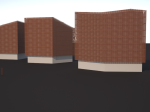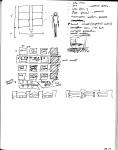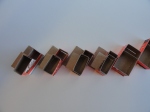I gave my final formal presentation on Wednesday and a lot of people have since asked, how’d it go? It went well. There was some pretty intense discussion following the slideshow, but it was never mean-spirited and definitely enriching overall.
The jury included David, Vince, and Stephen (though Darryl also asked some great questions). To be frank, I figured that the presentation was likely to sink or swim based on whether or not I could sell it to Stephen. Unfortunately, I’d never taken a studio or seminar with him to really understand his thought process. But since I knew he was big on design philosophies, I made sure to include a few quotes from my research and a lot of process material.
My hunch proved largely true as it was Stephen who led the early discussion. One of the first things he brought up was a follow-up to the quotes byJuhani Pallasmaa (from Questions of Perception). He pointed out that Pallasmaa and his coauthors advocate complete sensory design, never design for a single sense. My heart immediately dropped because I knew he was right; I had read the book and understood their thesis, but I somehow failed to see that I was using their writings to justify a single-sense design. So after claiming that sound was a forgotten sense, I proceeded to ignore the other senses!
The rest of the discussion focused on this or several related points. I suddenly felt very insecure about my project since my own research on cognitive mapping – things I made a special point to mention during the slideshow – made it clear that the mind understands its surroundings through an amalgam of sensory inputs. And yet my project made an extra effort to focus on just one. After chiding designers for focusing solely on vision, I was essentially guilty of the same crime (How did I not see that as a problem?!).
But it was also pointed out during the discussion that this project was never truly about design for the full sensory experience (the question I attempted to answer was How can architecture improve the standing of sound in the designed environment?). So was it really a problem to focus on sound during the design process? Perhaps not. Or perhaps the question was flawed from the very beginning.
presentation .pdf












































































































































































































